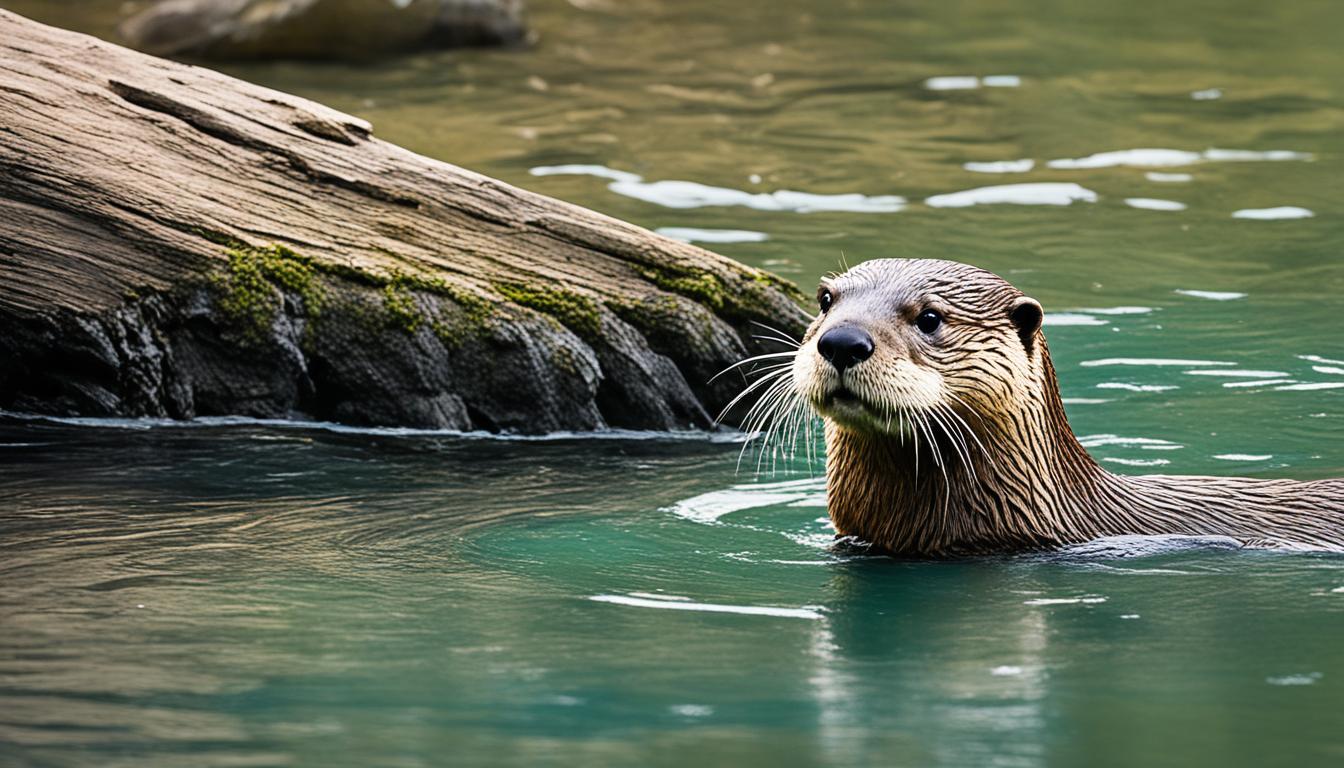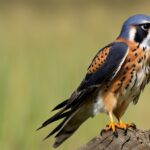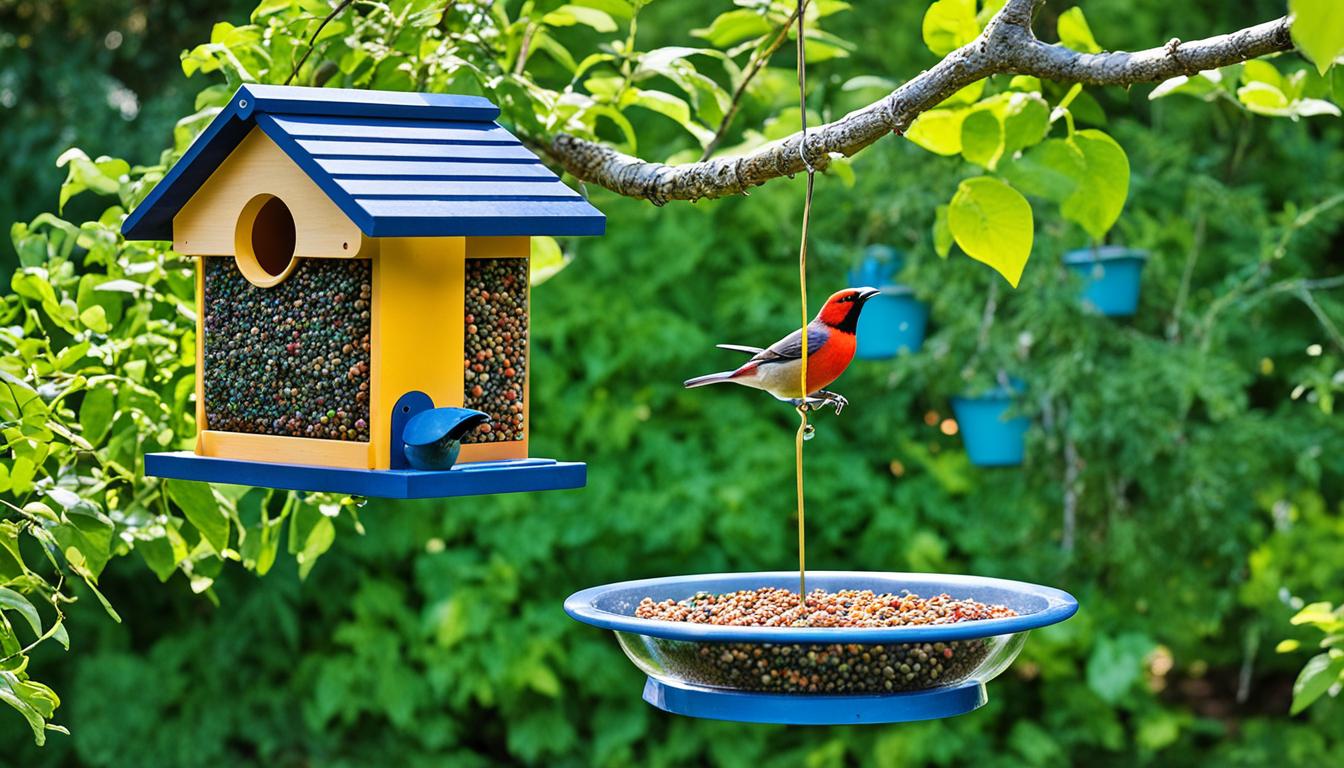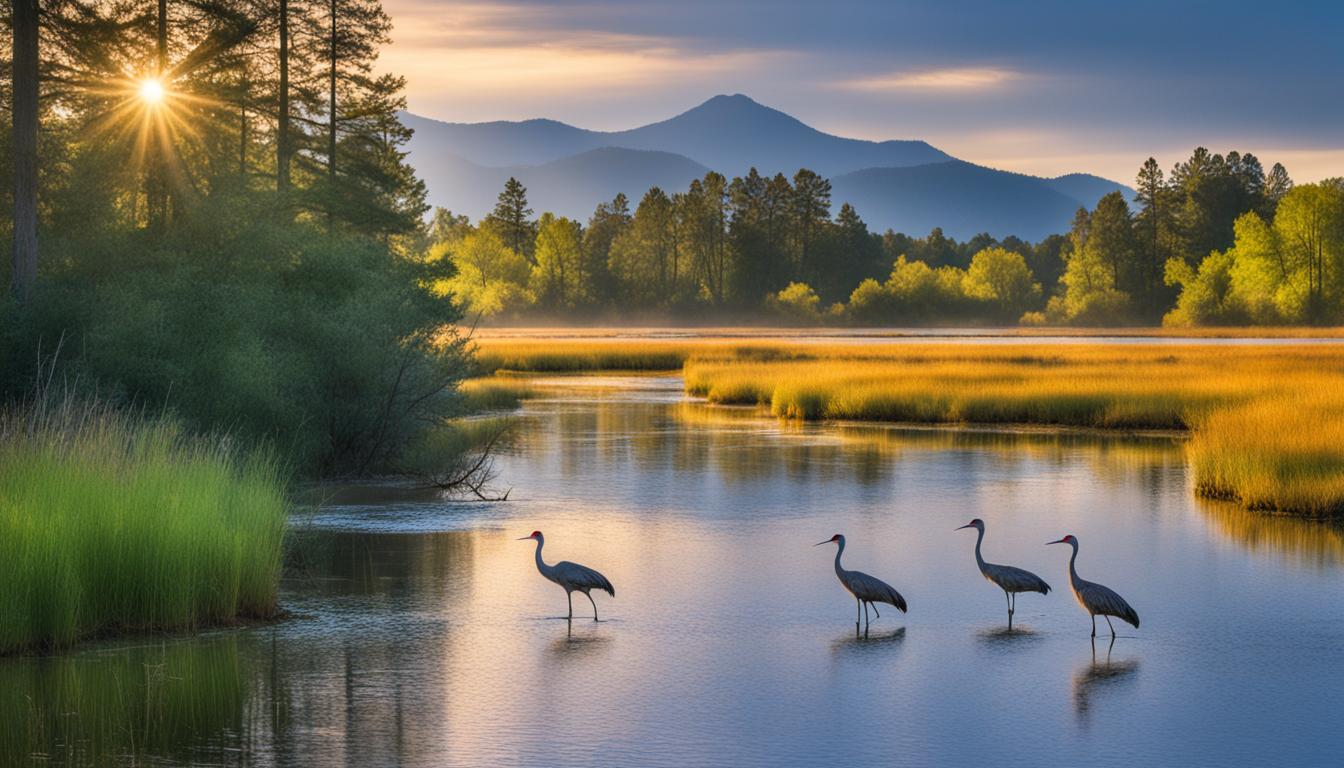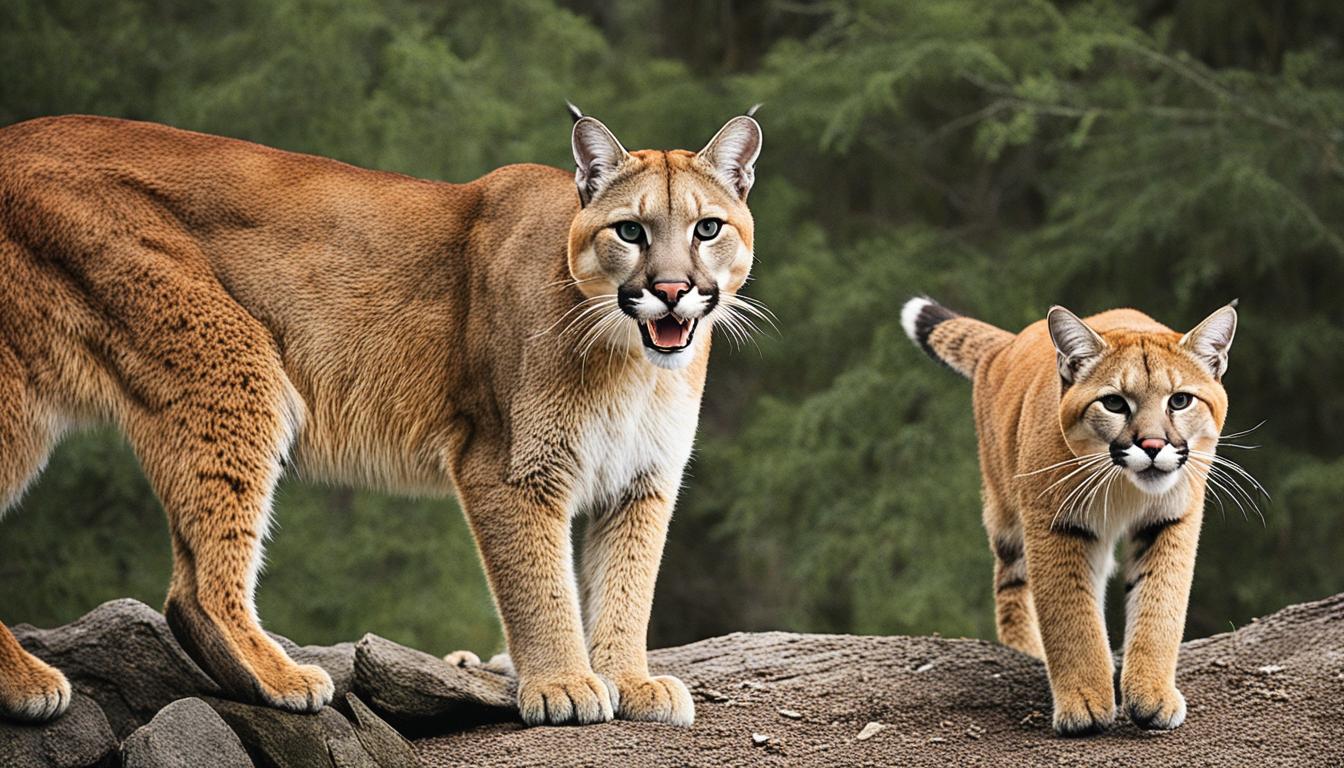Have you ever thought about what kind of home river otters like best? They are top predators in North America’s waterways. River otters need clean, healthy places to live. But, problems like pollution and hunting have made life hard for them. Still, in some places, they are making a comeback.
River otters love clean water. They show us how healthy an area’s water is as key species. This makes them very important for checking on habitat quality.
Introduction to River Otter Habitats
The North American river otter loves both calm lakes and busy rivers. They also enjoy living near the coast. These areas show us where nature is diverse and healthy.
River otters do well in lots of places if the living is good. Good conditions mean clean water, plenty of food, and places to hide. Where otters live is usually where the water is clean, there are many fish to eat, and the land by the water is welcoming.
“Understanding the specific habitats river otters prefer reveals much about the ecological health of these environments,” says Dr. Jane Park, an expert in wildlife conservation.
Not only do river otters live in freshwater, but they also thrive along the coast. This is where the water is pure and full of life. Their presence in these spots tells us where the best river otter homes are.
Clean water is very important. It helps not just the river otters, but it also points to a healthy area for all life. Trying to keep these homes safe shows a bigger goal of caring for nature.
The Importance of Clean, Unpolluted Water
River otters rely on clean, unpolluted water for their survival. They are highly sensitive to the quality of their water sources. This makes a healthy water environment vital for them.
Significance of Water Quality
For river otters, clean water is more than a luxury; it’s a necessity. They need pure environments to avoid harm from toxins and pollution. Pristine water is also crucial for finding their food, mainly fish and crustaceans.
Impact of Pollution on River Otters
Pollution threatens river otters by harming both their food and home. Chemicals and metals can lower birth rates and cause health problems. Since river otters are top predators, their health shows the health of the entire ecosystem.
| Pollution Type | Adverse Effects |
|---|---|
| Chemical Pollutants | Reduced birth rates, health deterioration |
| Heavy Metals | Toxicity in food sources, bioaccumulation |
| Pesticides | Disruption of the food chain, reproductive issues |
| Agricultural Waste | Habitat degradation, water quality loss |
River otters are crucial for a healthy aquatic environment. To keep them safe, ensuring their homes have clean water is key. This effort is important for the well-being of their broader ecosystem.
Natural Habitats of River Otters in North America
River otters thrive in many places across North America. They need clean water and lots of food to live well. We’ll look at where these creatures call home.
Rivers and Streams
Dynamic rivers and calm streams are perfect for river otters. These places bring them the food they need, like fish and frogs. The plants along the water’s edge keep them safe.
Lakes and Wetlands
Lakes and wetlands are great spots for river otters. These areas are full of food and provide quiet places for them to rest and raise their young. The mix of plants and shallow water in wetlands makes a great home for them.
Coastal Regions
Estuaries and saltwater marshes are also important for otters. The salty water brings many kinds of fish. These coastlines offer a mix of fresh and saltwater, which is great for river otters.
River otters in North America live in many different places. They show us how adaptable they are. This ability helps them find the best places to live in nature.
| Habitat Type | Key Features | Benefits for Otters |
|---|---|---|
| Rivers and Streams | Flowing waters, abundant fish | Food supply, protective cover |
| Lakes and Wetlands | Nutrient-rich, dense vegetation | Breeding grounds, resting areas |
| Coastal Regions | Estuaries, marine organisms | Diverse food sources, unique habitat |
What Types of Habitats Do River Otters Prefer?
Learning about where river otters like to live helps us see what’s needed for them to do well. Otters need places with a lot of water, thick plants by the water’s edge, and plenty of food. They live in various habitats, from rivers to the ocean. This shows us the important conditions for their survival and growth.
- Ample Access to Water: River otters usually stay near rivers, ponds, and the coast. They must have access to clean water all the time to thrive.
- Dense Riparian Vegetation: Lush plant life along riverbanks gives river otters hiding spots. These areas keep them safe from threats like other animals and humans.
- Abundant Prey: The best otter homes are full of food. Otters eat fish, frogs, shellfish, and tiny mammals. This shows how important active environments are for them.
River otters can live in many places, from fresh water to the sea. Knowing what they need in a home can help save them. By making sure their habitats are well-kept, we can protect otter populations.
Optimal Environmental Conditions for River Otters
It’s important to know what river otters need to thrive and keep their numbers up. They rely on specific environments with lots of plants along the water and plenty of food. These places are not just good for otters; they are key for a healthy ecosystem too.
Riparian Vegetation
Plants along the water, or riparian vegetation, are vital for otters. This greenery gives them cover from danger and the right spots to build homes and raise their young. Areas with many trees, shrubs, and grasses near rivers create a perfect home for these animals.
Availability of Food Sources
Having many different kinds of food is crucial for otters. They eat things like fish, frogs, and small critters, so they need plenty of meal options. A rich variety of prey in their home means they can find food easily, which is important for their health and making more otters.
| Environmental Factor | Importance for River Otters |
|---|---|
| Riparian Vegetation | Provides cover, materials for dens, and protection from predators. |
| Food Sources | Ensures a stable and diverse diet necessary for survival and reproduction. |
Differences Between Freshwater and Marine Environments
Looking at the places where river otters live teaches us a lot. They live in both freshwater (like rivers) and saltwater (like the sea) places. Each type of environment has its own special things that help river otters live well.

Rivers and streams are great for river otters because they have lots of fish to eat. There’s also many hiding spots in the bushes for them. The water where they live must be clean and pure. This is super important for the otters and other animals that live there.
Coastal waters and estuaries are very different from freshwater homes. These places have salty water and move with tides. Here, otters must be very good at changing to keep up. They can find food and places to hide in these spots. But, they also need to deal with people and changes in their water homes.
The table below shows how freshwater and saltwater homes differ for river otters:
| Environment Feature | Freshwater | Marine |
|---|---|---|
| Water Type | Freshwater (rivers, streams) | Saltwater (coastal waters, estuaries) |
| Food Sources | Fish, amphibians, crustaceans | Marine fish, crustaceans, mollusks |
| Shelter | Dense riparian vegetation | Coastal vegetation, rocky outcrops |
| Water Quality | Requires clean, unpolluted waters | Sensitive to pollution but adaptable |
Both freshwater and saltwater places are important for river otters. This shows how good they are at adapting. They can live in many different conditions. This is why we must protect these areas for the otters to stay safe and happy.
River Otters’ Home Range and Territory
River otters have their own special places where they do different things, like eat and play. These spots can be on land or in water. They show how smart and flexible they are in finding the right places to live.
Size and Scope of Home Range
The area a river otter calls home can change a lot depending on the otter species and the environment it’s in. Usually, male otters have bigger spots to live in than females. But sometimes, their spots can be in the same area. It’s key to keep these places big and quiet for otters to stay healthy and safe.
Territorial Behavior
River otters like to keep their areas to themselves, marking them with their smell. This marking is very important for otters. It helps keep peace and makes sure everyone can find what they need without fighting. They work hard to keep other otters out to protect their own space.
The Role of Natural and Artificial Dens
Dens are crucial for river otters. They provide a safe place for otters to rest, have babies, and stay safe from other animals. Both natural and human-made dens are important for otters. They make sure otters have the best place to live.
Types of Dens Used by River Otters
River otters are very smart in choosing their homes. They pick spots like under banks, inside logs, or old beaver lodges. Sometimes they live in special human-made dens. These places show that otters can live in many different homes.
Importance of Dens for Reproduction and Rest
Dens are key for otters when they are having babies and resting. Moms have their babies in these quiet, safe places. This is also where otters take a break. It’s really important for their health. Making sure otters have good dens is crucial to help them survive.
| Type of Den | Natural Examples | Artificial Examples |
|---|---|---|
| Shelter | Undercut Banks, Hollow Logs | Man-made burrows, Concrete structures |
| Reproduction | Beaver Lodges, Cavities in Vegetation | Conservation Project Shelters |
| Rest | Dense Vegetation Areas, Riverbank Holes | Custom-built sections in reserves |
Regional Variations in River Otter Habitats
River otters show us how Earth’s diverse climates shape their homes. Each area’s unique climate and land create the perfect place for otters to live. This impacts where otters live and how they behave.
River otters live in many places, from cold Alaska to the warm Gulf Coast. The environment in each area is different, based on its weather, land, and water. This makes every otter home special.
| Region | Climate | Key Habitat Features |
|---|---|---|
| Alaska | Cold | Pristine lakes, rivers, coastal tundra |
| Great Lakes | Temperate | Extensive riparian vegetation, large freshwater bodies |
| Gulf Coast | Warm | Estuaries, mangroves, coastal marshes |
Learning about these regional variations helps people protect otters and their homes. For instance, in the Pacific Northwest, dense areas near streams support many fish. Places like the Southeast have vast, damp lands that are also great for otters.
By looking at where otters like to live, we see how important it is to protect their diverse environments. Different areas need special care to keep otters going strong all over North America.
Impact of Human Activities on River Otter Habitats
Human actions greatly influence the homes of river otters. They affect the otters’ survival and where they live. Pollution from farms and factories makes the water dirty. This harms river otters because they are very sensitive. It shows how much human activities can damage these areas.
The health of river otter populations is directly linked to the ecological state of their habitats, making them key indicators of environmental health.
Building in their living spaces and making new roads can take away the otters’ food and shelter. Putting up dams and changing the course of rivers messes up the natural balance and flow. This hurts river otters even more.
It’s very important to lessen the bad effects humans have on the homes of river otters. We need to save places like wetlands and control how many otters are hunted. If we want river otters to keep living, we have to work together. This means facing the problems and making saving their homes a priority.
Conclusion: Ensuring a Bright Future for River Otters
To make sure river otters thrive, we must keep their homes full of clean water and lots of food. It’s important to shield these places from pollution and too much building, which harm the balance they need to live. River otters show us if the water is clean – their health tells us if the area is good for all water life.
For river otters to do well, we need to keep learning about where they live and what they need. We should also tell everyone about how crucial clean water is. Helping with projects to fix habitats, stopping pollution, and making laws to guard these areas will all help.
You can also help by doing easy things, like cutting down on water pollution and joining in on clean-up events. Pushing for better rules to protect the environment is crucial too. When we work to keep the places where otters live safe, we also protect a world that’s good for all creatures, including people. The future of river otters depends on us finding a good balance between nature and our own needs.

